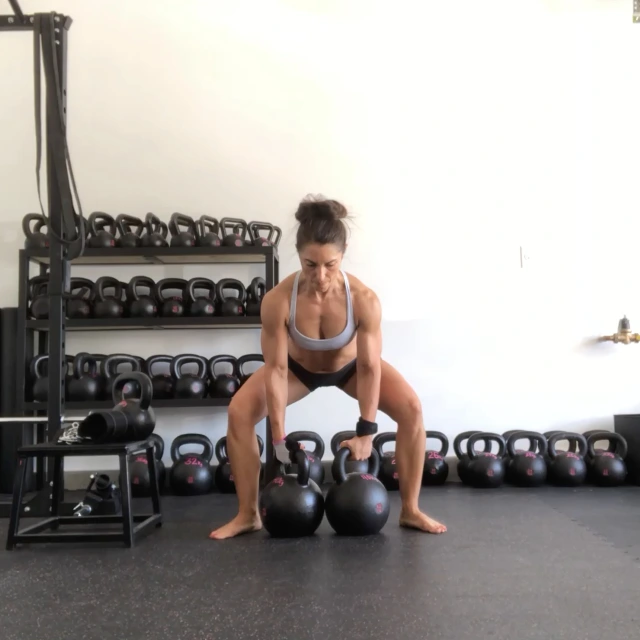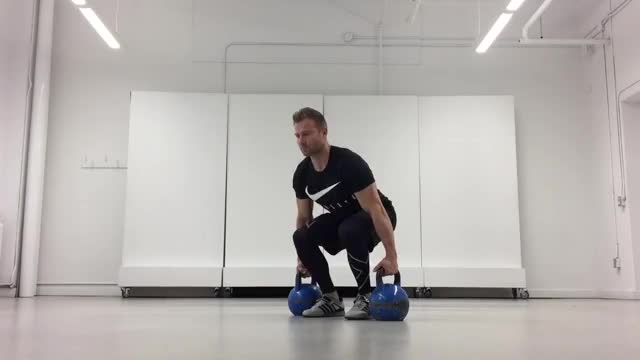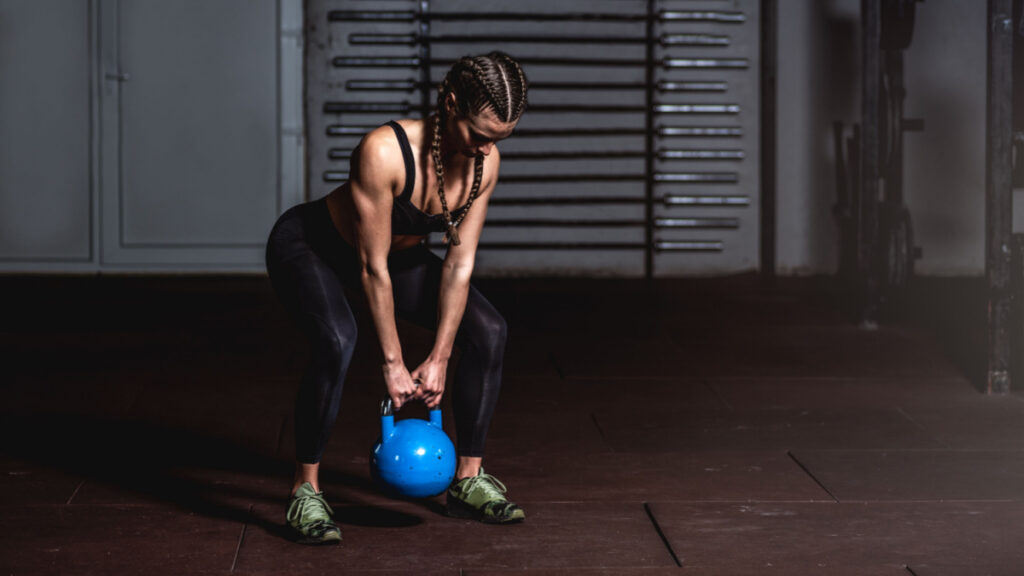KETTLEBELL DEADLIFT
The kettlebell deadlift for physical preparation?
The kettlebell deadlift is a kettlebell exercise that strengthens the legs, back and gluteal muscles. This is a variation of the traditional deadlift, performed with a kettlebell. In this article, we will introduce you to the kettlebell deadlift technique, the muscles involved, how to incorporate it into your training program and tips for safe and effective execution.
Kettlebell deadlift technique
The technique of the kettlebell deadlift is similar to the traditional deadlift, but with some differences. Here are the steps to follow:
- Starting position: Place the kettlebell on the floor in front of you and grasp it with both hands in a pronated grip (palms down). Spread your feet about shoulder width apart and tilt your torso forward, keeping your back straight and bending your knees slightly. The kettlebell should be between your legs and your center of gravity should be above the kettlebell.
- Movement: To lift the kettlebell, push your hips forward using the strength of your legs, arms straight, then straighten your body as you lift the kettlebell. Keep your back straight throughout the movement and contract your gluteal and abdominal muscles to stabilize your trunk.
- End position: Once you are upright, put the kettlebell down slowly and with control. Return to the starting position by bending your knees slightly and keeping your back straight. Repeat the movement for several repetitions.

The muscles worked by the kettlebell deadlift
The kettlebell deadlift is a complete exercise that involves several muscle groups. The main muscles worked are :
- Quadriceps and hamstrings: they are used during the push phase to lift the kettlebell, and during the descent phase to control the weight
- The gluteal muscles: they are used to extend the hips
- The abdominal muscles : the abdominal muscles are used to stabilize the pelvis and spine during exercise.
- The back muscles: they are used to maintain a good posture during the whole movement
Benefits of the kettlebell deadlift for physical fitness
The kettlebell deadlift is an effective exercise for strengthening the lower body and back muscles. It has many fitness benefits, such as:
- Increased muscle strength, mainly for the posterior chain
- Ideal for building muscle, firming and toning the buttocks because it is a hip extension movement with the legs almost stretched
- Improved posture and trunk stability
- Improved hamstring flexibility
- Improved coordination and balance
- Increased metabolism and energy expenditure
How to integrate the kettlebell deadlift into your training program
Here are some recommendations for incorporating the kettlebell deadlift into your training program :
- Choice of kettlebell weight: Start with a light weight and gradually increase according to your fitness level. However, you should know that the deadlift is the exercise that allows you to lift the most weight. As soon as your technique is perfected and you feel no pain, do not hesitate to increase the load.
- Recommended training frequency: 2 to 3 times per week, alternating with other muscle strengthening exercises
- Kettlebell Deadlift Variations: There are several variations of the kettlebell deadlift, such as the sumo deadlift and the single-leg deadlift, which can be used to target different muscles or to vary the workout

Tips for efficient and secure execution
Mistakes to avoid: Avoid arching your back during the exercise, lifting your shoulders, taking your heels off the ground or swinging your weight. Keep the kettlebell close to your body and contract your abs tightly throughout the movement.
How to correct common mistakes: To correct poor posture, focus on the position of your feet and knees, and use your abdominal muscles to maintain good posture during movement.
Cautions: If you have back problems or other health concerns, consult a health care professional before beginning any training program.
Conclusion
The kettlebell deadlift is an effective exercise for strengthening the legs, back, gluteal muscles and core. By incorporating it into your training program, you can improve your strength, posture and balance. However, it is important to follow proper technique and take precautions to avoid injury. Try it and feel the benefits on your body.

